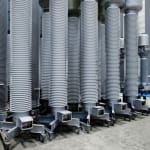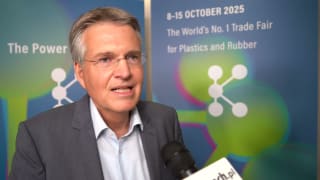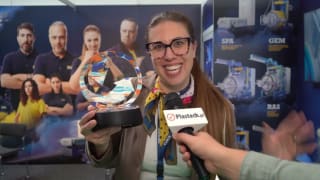
Wacker is all set to unveil a new high-consistency silicone rubber for the production of composite insulators with extruded silicone housing at the next K 2025 International Trade Fair for Plastics and Rubber. The new product is supplied as a 2K addition curing system and is suitable for extrusion manufacturing processes, in particular spiral extrusion. In contrast to other production methods, this makes manufacturing of even large-scale insulators with variable diameters easier and more cost-effective. K 2025 will be held in Düsseldorf, Germany, from October 8 to 15.
Composite hollow-core insulators come under the category of composite insulators. They are basically made up of a hollow, electrically non-conductive tube with annular insulator housing on the exterior made of an electrically non-conductive material. Hollow core insulators are used for electrotechnical equipment such as bushings, instrument transformers, circuit breakers or surge arresters. They can be imposing in, especially when it comes to high voltage application. Diameters of over one meter and lengths of over ten meters are not uncommon. But, thanks to their comparatively low weight, composite hollow core insulators are much easier to install than conventional insulators made out of ceramics. Weight savings may add up to 80 percent.
At this year’s International Trade Fair for Plastics and Rubber, chemical company Wacker will be presenting a new high-consistency silicone rubber that has been developed specifically for manufacturing composite insulators with extruded silicone housing. This includes especially large volume hollow core insulators. Powersil 1900 A/B can be used to manufacture such components by what is known as the spiral extrusion process. Here, the silicone elastomer is extruded onto a continuously rotating insulating tube, thus ensuring a thoroughly even application of the intricate outer sheds. Thanks to this process, manufacturers can even produce high-precision large-scale insulators at a comparatively low cost. Furthermore, the production of conical shapes - often not feasible with conventional injection-molding techniques - is also possible.
Wacker supplies Powersil 1900 A/B as a ready-to-use 2K high consistency silicone rubber. The product cures by addition curing to form an electrically insulating silicone elastomer with excellent resistance to tracking, erosion, and arcing. No by-products are released during curing. The insulating housing with its sheds has water and dirt-repellent surfaces. Unlike porcelain or glass, they retain their excellent dielectric properties even when used continuously in salty or dusty conditions or exposed to rain and high humidity. Rain and dirty water simply drip off the water-repellent silicone housing. In most cases, this also eliminates the need for costly cleaning operations of composite insulators.
As an elastomer, Powersil 1900 A/B has very good mechanical properties. It is UV-resistant and, thanks to its elasticity, can withstand all kinds of weather, earthquakes and vandalism far better than other materials. Silicone elastomers thus also improve power grid resilience and ensure a secure power supply.

Silicones in power engineering
Silicone elastomers have been a regular feature in high-voltage engineering for decades. As a high-performance insulating material, they possess numerous properties that no other material can match in this combination. In addition to high tracking, erosion and arc resistance, silicones are extremely resistant to weathering and UV radiation. They can withstand heat, cold and extreme temperature fluctuations. The water-repellent surfaces of the cured elastomer are yet another typical feature of silicone elastomers: they remain water-repellent even when polluted. This property, known in technical jargon as “hydrophobicity” and “hydrophobicity transfer”, prevents the formation of electrically conductive layers of water, dirt and salt, which can lead to electrical failure of the insulator due to flashovers. It is therefore no wonder that silicone elastomers are used today in almost all areas of power transmission and generation.



